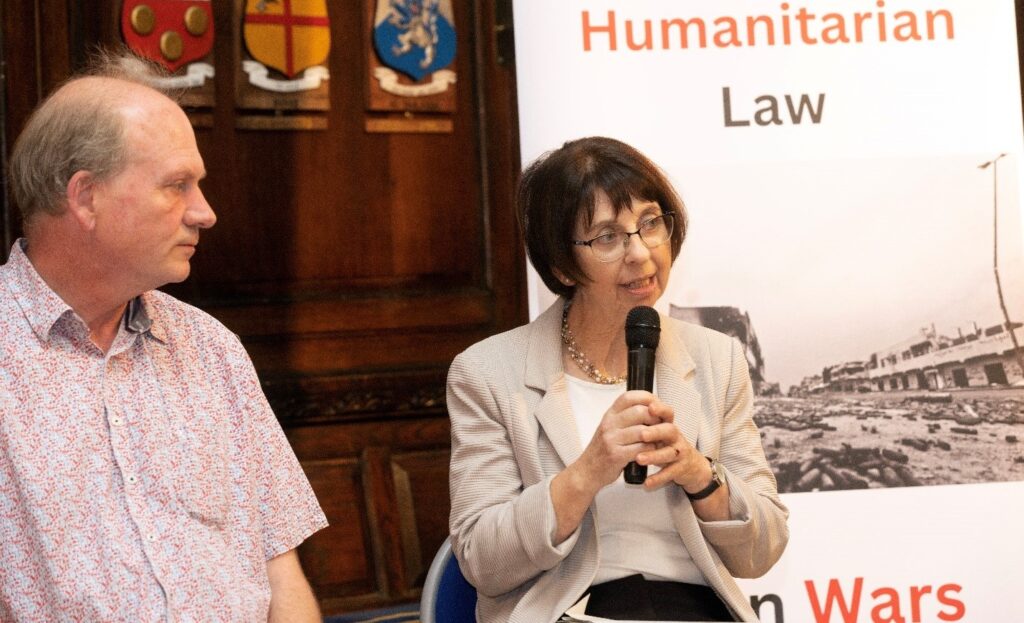“War in Cities: Exploring the devastating consequences of armed conflict in urban contexts”.
This Conference was held in the Mansion House, Dublin on Tuesday 24th October 2023.
Background
According to the UN, an estimated 50 million people in urban areas around the world are bearing the brunt of hostilities. These figures, already staggering, will only increase as the world continues to urbanise. The UN also expects that almost 70% of the world’s population will be urban by 2050. While war in cities is nothing new, the pace and scale of urbanisation globally are increasing the risk that towns and cities will become the major battlegrounds of future conflicts, endangering millions of civilians if current trends are not reversed.
For civilians caught up in active hostilities arising from armed conflict in urban areas, the humanitarian impacts are devastating. Such hostilities cause injury and death to civilians and damage to and destruction of critical civilian infrastructure. Essential services that are indispensable for sustaining human life and livelihoods such as water, power, communication, sanitation, and health services are disrupted by the direct, indirect, and cumulative impacts of hostilities. In extreme circumstances, civilians trapped in besieged cities cannot reach lifesaving humanitarian assistance nor safe evacuation routes; and humanitarian organisations expend limited time and resources seeking to negotiate access and facilitate safe passage. Fighting in urban centres also disrupts the lives of millions of individuals, of families, and of communities resulting not only in the loss of livelihoods and disruption of social networks but can also lead to society-wide deficits in education and other opportunities. Displacement can continue for years, as homes and infrastructure are destroyed and landmines, improvised, unexploded, and abandoned explosive ordnance and devices litter residential areas. This contamination may take many years to be cleared, delaying sometimes for decades the safe return of populations.
Many of these consequences are not unique to war in cities, but they occur on a significantly larger scale in urban warfare because of the density of the civilian population and civilian objects, the tactics and weapons used by the combatants, and of the protracted nature of urban fighting.
The conference will focus on armed conflicts occurring in urban settings, the devastating humanitarian impacts, and the implications this has for IHL and the protection of civilians more generally.
Summary
Secretary General Deirdre Garvey opened the Conference, highlighting the many consequences of urban warfare on civilian populations and the relevance of this Conference in today’s context.
This was followed by a panel discussion by colleagues in the humanitarian sector, which highlighted the devastating humanitarian consequences of urban warfare has on civilians. Speakers highlighted, among other things, the impact on healthcare, food systems, livelihoods, mental health, and on women and girls.
Philip Spoerri, Head of Delegation for UK and Ireland at the ICRC delivered a presentation on the application of IHL in urban areas
A second panel discussed how we can better protect civilians in these contexts going forward. This included a discussion on the implementation of the “Dublin Declaration”, signed almost one year ago.
Finally, closing remarks and thanks were delivered by IRC Chair, Pat Carey.
A recorded version of Ms Dina el-Mamoun’ speech and corresponding presentation can be watched below. Ms el-Mamoun is Civilians in Conflict Country Director in Yemen who speaks compellingly about war in cities and highlights the day-to-day life of someone living and working in a city affected by this.
Watch the Keynote Speech:
Read the full biographies of the speakers here.



